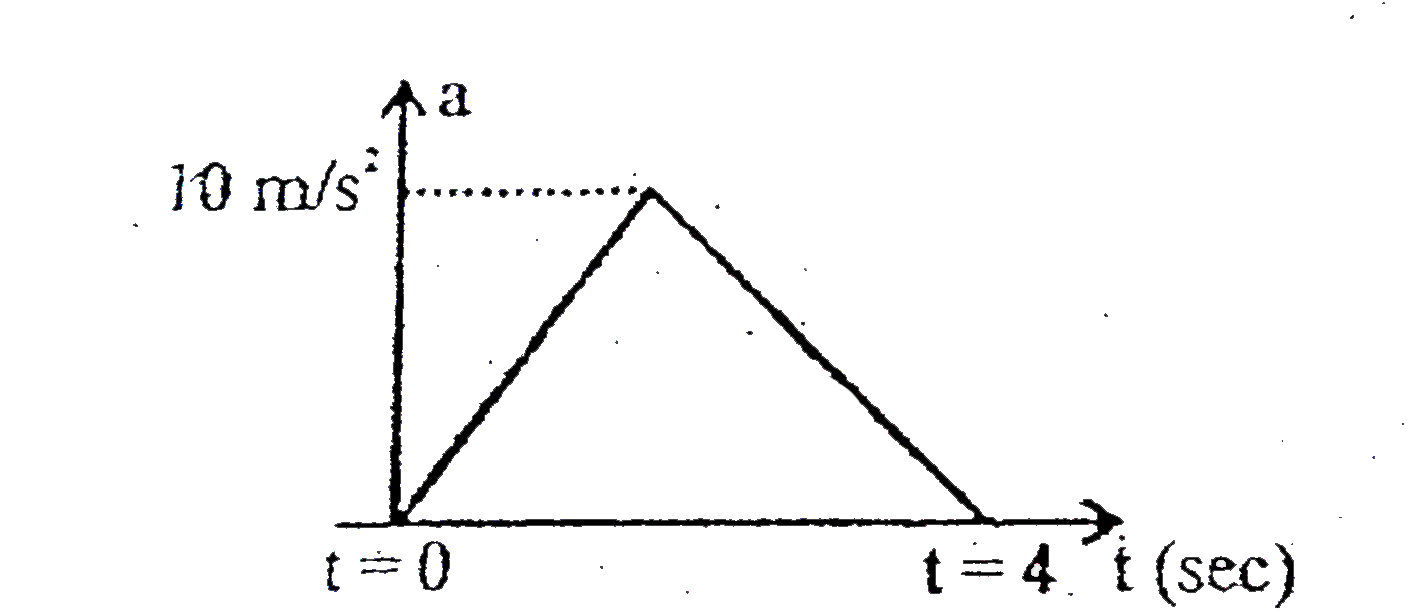From the adjoining acceleration-time graph for a particle, find the average acceleration in initial 30s.

25m/s2
Topper's Solved these Questions
- MOTION IN A STRAIGHT LINE BOOK - MODERN PUBLICATIONCHAPTER - MOTION IN A STRAIGHT LINE EXERCISE - CONCEPTUAL QUESTIONS
14 Videos
- MOTION IN A STRAIGHT LINE BOOK - MODERN PUBLICATIONCHAPTER - MOTION IN A STRAIGHT LINE EXERCISE - TOUGH & TRICKY ( PROBLEMS)
10 Videos
- MOTION IN A STRAIGHT LINE BOOK - MODERN PUBLICATIONCHAPTER - MOTION IN A STRAIGHT LINE EXERCISE - CHAPTER PRACTICE TEST
16 Videos
- MOTION IN A PLANE BOOK - MODERN PUBLICATIONCHAPTER - MOTION IN A PLANE EXERCISE - Chapter Practice Test
15 Videos
- OSCILLATIONS BOOK - MODERN PUBLICATIONCHAPTER - OSCILLATIONS EXERCISE - Practice Test (For Board Examination)
12 Videos
Similar Questions
Knowledge Check
The velocity-time graph of a particle is not a straight line. Its acceleration is
AzeroBconstantCnegativeDvariableThe adjoining curve represents the velocity-time graph of a particle, its acceleration values along OA, AB and BC in metre/sec2 are respectively-
 A1,0,-0.5B1,0,0.5C1,1,0.5D1,0.5,0
A1,0,-0.5B1,0,0.5C1,1,0.5D1,0.5,0The graph between displacement and time for a particle moving with uniform acceleration is a
Astraight line with a positive slopeBparabolaCellipseDstraight line parallel to time axis
The velocity time graph for a particle is shown in figure. Draw acceleration time graph from it.

View SolutionFigure shows the acceleration-time graph of a particle moving along a straight line. After what time the particle acquires its initial velocity?

View SolutionAcceleration time graph of a particle moving along a straight line is given. Then average acceleration between t=0 & t=4 is :−

View SolutionThe acceleration - time graph for a particle moving along x - axis is shown in figure, If the initial velocity of particle is −5m/s, the velocity at t = 8 s is

View SolutionThe acceleration versus time graph for a particle moving along a straight line is shown in the figure. If the particle starts from rest at t = 0, then its speed at t = 30 sec will be :

View Solution


 .
.